 Your new post is loading...
 Your new post is loading...
I first drew a version of this cartoon years ago sitting behind the focus group one-way mirror while working at General Mills. We held a lot of focus groups, many of them in a Minneapolis suburb called Eden Prairie. We used to jokingly refer to those focus group respondents as “The Oracles of Eden Prairie.” We seemingly brought just about every marketing idea to the Oracles of Eden Prairie for inspiration and direction. But what frequently happened is that we would listen for statements that confirmed what we already believed and then disregard the rest. I learned that focus groups can be a great tool for confirmation bias. The Wall Street Journal recently wrote about how focus groups are gradually being displaced by technology-driven tools like social listening. As Seventh Generation’s Maureen Wolpert put it: “It’s very expensive to find that progressive-leaning, millennial new mom who has the time to attend a focus group. This is a way to listen in on the conversation moms are having and to really see their problems.”...
The job search has gone almost completely digital and increasingly social. In fact, a good portion of job seekers use Facebook and Twitter to research companies, while recruiters use LinkedIn to vet potential candidates. However, for younger job seekers, Instagram is becoming an important place for learning about the culture of potential workplaces. Jobvite surveyed more than 2,000 American workers with the goal of demystifying the supposed rift among American job seekers. What it discovered was that the idea of the “divided America” was a myth, and job seekers are as diverse as the nation in which they live. There are, however, some distinct perspectives depending on race, gender and generation....
Thanks to multitasking (and our method of accounting for it, explained in a moment), US adults’ average daily time spent with major media will slightly exceed 12 hours this year, according to eMarketer’s latest report, “US Time Spent with Media: eMarketer’s Updated Estimates and Forecast for 2014-2019” (available only to eMarketer PRO subscribers). But while our reports early in the decade told a story of robust gains—with increases in digital usage more than compensating for declines in time spent with non-digital media—growth has been petering out. Of course, media multitasking is what has made so much usage possible. Like a Coney Island contestant stuffing hot dogs into his mouth with both hands, people are often using multiple media at the same time....
Whether it’s plain old print coupons, shiny new digital coupons, frequent flyer points, cashback or dozens of other loyalty programs, consumers seem to be, well, still loyal to their favorite loyalty programs. Our news roundup today looks at the latest research and developments in loyalty programs. According to new research from Valassis, 79% of consumers can be influenced to switch brands by coupons. A new report from Bond Brand Loyalty says 13.4% of consumers are members of loyalty programs but only 6.7% are active users. 64% of brands reported an increase in loyalty membership according to 3CInteractive‘s new “2017 Mobile Loyalty” report. Excentus said 37% of consumers prefer fuel discounts over credit card rewards, coupons, retailer points and instant discounts. Inmar’s 2017 Industry Promotion Analysis found consumers redeemed more than 2.2 billion coupons in 2016 with digital coupons making up 16.2% and print-at-home digital coupons 3.6%. 3Cinteractive reports 21% of consumers prefer SMS or push messaging from brands and loyalty programs. Research by Aberdeen Group shows companies using SMS messaging got a 24.5 % year-over-year increase in return on marketing investments....
As we approach the year's second quarter, Google is already returning over 46,600 results for “digital trends 2017.” And if you’re in the digital marketing space, there seems to be an unspoken rule that you must always have an opinion on what the key trends will be for the year ahead.
But could it be that we’re all stuck in an industry echo chamber? As it turns out, some new research from Code Computerlove might burst that bubble.
Code Computerlove surveyed 1,000 U.K. adults to find out what they really think about these trend predictions -- things like voice search, virtual reality, and chat-bots. That data was then compared to what’s actually making the most noise online. Some key findings included:
- Mobile payments are the most sought-after technology in 2017.
- 9 out of 10 consumers claim to have no interest in using augmented reality in the near future.
- 1 in 5 people surveyed aim to spend less time in front of screens this year....
Any internet search will show that there are a huge number of online tools available for the creation on polls and surveys. The ones included here are some of the best I have used and show some of the variety of polling tools available.
Via Nik Peachey
Let's start with a story. To analyze the effectiveness of its TV commercial storyboard, Makro, an international digital and in-store retailer, asked neuroscience research firm Neurensics to conduct an f-MRI study to determine people's reactions. The experiments showed that the storyboard scored lower than average in effectiveness: "It activated more negative than positive emotions. In particular, the storyboard did not activate decent levels of trust and expectation. The overall result was a negative score on influencing buying behavior." The experts' advice to Makro was to eliminate the scenes that provoked anger and rejection, to mention the company's end-value, resolve some elements of the plot, and add music with a climax. The TV commercial based on the optimized storyboard provoked more positive feelings in the audience, according to the Neuromarketing Science and Business Association (NMSBA). The result of Makro's trusting in neuroscience to enhance its advertising activities was a 12% increase in sales compared with the same period in the previous year....
You wake up, yawn, stretch. Pick up the phone. Check Facebook. “Like.” “Like.” “Like,” again. After 10 “likes,” Michal Kosinski knows you better than your work colleagues. After 70, he knows you better than your partner does, including -- whether these things were explicitly referenced in your clicks or not -- your skin color, your sexual orientation, whether you’re a Democrat or a Republican, whether you smoke or do drugs… The list goes on. Like some creepy alt-Santa, he knows how open you are. Whether you’re a perfectionist. Whether you’re considerate. Whether you’re neurotic. Kosinski isn’t a CIA agent or a spy. He isn’t even a marketer. He’s a researcher at Stanford, and he’s worked out how to turn your clicks into psychographic profiles....
Mobile devices have become a companion to many people when they watch TV, whether it’s browsing related content or discussing it socially. And more TV and video viewers are participating in these types of second-screen digital activities currently than did so two years ago.
Research from Ericsson, a communications technology company specializing in mobility, broadband and the cloud surveyed more than 30,000 internet users worldwide ages 16 to 69 who have a broadband internet connection at home and watch TV and view video on a weekly basis. Generally, the study found that more respondents are conducting digital activities via a smartphone or tablet, while at the same time watching TV, than they did in 2014....
When the US presidential election was called, even Republican strategist Mike Murphy declared data dead. Others have said it’s the end of polling. To those who felt a Hillary Clinton victory was all but certain, Donald Trump’s success at the polls might undermine faith in big data. But this sentiment misunderstands statistics. Data is impartial and accurate; when things go wrong, it’s usually when we try to interpret it. How different people assess risk and make decisions often comes down to how we perceive probabilities. Assigning a probability to an uncertain outcome is part art and science. The most scientific way is to use data—in this case, polling numbers. This time, election forecasts based on polling data were spectacularly inaccurate. They predicted an easy Clinton victory, and assumed that women and college-educated voters would turn out for her in large numbers. In fact, according to exit polls, 42% of women voted for Trump, including 45% of white women with college degrees. Forecasts also predicted hardly any minority voters would consider Trump. But they did. Minority groups voted more for Obama than Clinton. A non-trivial number, nearly one third of Hispanics and Asians, voted for Trump. What seems like a failure of polling data, though, is really our inability to approach the data objectively....
If you’ve been in marketing for more than a hot second, you’ve no doubt heard of the Buyer’s Journey. What you might not know is that this journey has dramatically changed in the last decade. 67% of the buyer’s journey is now digital. Today’s buyer is up to 90% of the way through their buying journey before they reach out to the vendor.Interactive content is front and center in this digital shift in the Buyer’s Journey. As companies produce more and more content in order to satisfy today’s self-guided buyer, only the most engaging content will stand out and get noticed. Why does interactive content stand out in the sea of content online today? Because it doesn’t talk at buyers – it talks with them. There are interactive content types for every stage in the Buyer’s Journey: Awareness, Evaluation, and Decision-making. However, it plays an especially important role for both the buyer and the business in the Awareness stage....
A new European study on human behaviour suggests that people can be divided into one of four main personality types — with 'Envious' being the most common.
The new research, carried out by a team of researchers from Universidad Carlos III de Madrid and the universities of Barcelona, Rovira i Virgili and Zaragoza, Spain, presented 541 volunteers with hundreds of social dilemmas and asked them to report on what they would do in each situation.
Participants had to make decisions based on individual or group interests, which would lead to either collaboration or conflict with others.
The decisions also had different consequences depending on what another participant involved decided to do, with Anxo Sánchez, one of the authors of the study explaining, "Those involved are asked to participate in pairs, these pairs change, not only in each round, but also each time the game changes. So, the best option could be to cooperate or, on the other hand, to oppose or betray ..... In this way, we can obtain information about what people do in very different social situations."
The researchers then created a computer algorithm to analyze the responses and classify participants into personality groups based on their behaviour.
The results showed that the majority of the participants — 90 per cent — could be divided into just four basic personality types, Envious, Trusting, Optimistic, and Pessimistic.
So why is this? Why do some societies not encourage casual smiling? I got my answer, or at least part of one, when I stumbled across a new paper by Kuba Krys, a psychologist at the Polish Academy of Sciences. In some countries, smiling might not be a sign of warmth or even respect. It’s evidence that you’re a fool—a tricky fool. Krys focused on a cultural phenomenon called “uncertainty avoidance.” Cultures that are low on this scale tend to have social systems—courts, health-care systems, safety nets, and so forth—that are unstable. Therefore, people there view the future as unpredictable and uncontrollable. Smiling is a sign of certainty and confidence, so when people in those countries smile, they might seem odd. Why would you smile when fate is an invisible wolf waiting to shred you? You might, in those “low-UA” countries, even be considered stupid for smiling. Krys also hypothesized that smiling in corrupt countries would be, um, frowned upon. When everyone’s trying to pull one over on each other, you don’t know if someone’s smiling with good intentions, or because they’re trying to trick you....
|
It was another intriguing week in online marketing data points, with even more eyebrow-raising mobile numbers than usual. Check out the eight that we found particularly noteworthy:Social TV, gamers and Wonder Woman made the list.
Polar tested different ad formats including image-based content (graphics, image galleries, and slide shows), article-based content, and video-based content. It tested more than 30 pieces of content, with each type tested by a minimum of 1,000 people via desktop, mobile, and both. Among the findings of the study, conducted in March 2017: --Consumer awareness of a brand increased to 69% after engaging with branded content, while purchase intent was 51%. The study also used a control group with no branding. --Incorporating companion display ads next to branded content improved purchase intent by 17% and didn’t have a negative impact on brand perception --Imagery (infographics, image galleries, and slide shows) performed the best among content formats. And notably, video isn’t always needed to tell the story. However, imagery outperformed articles by 11%. "We found that consumers responded a bit more favorably when there was less obvious branding,” Bella said....
Another week of digital marketing stats is in the books. Check out the nine that grabbed our attention: 1. Liquor goes liveCinco de Mayo is right around the corner, and we got exclusive data on a livestreaming campaign Jose Cuervo did last year for the occasion. The brand worked with the company Livestream, which offers events marketers hardware and software tools to share their happenings live online. Jose Cuervo’s 45-minute Cinco de Mayo concert got 73,000 live views in real time. We’ll have more on Livestream’s best branded campaigns in an exclusive Tuesday morning. 2. UGC videos decline dramatically YouTube has a brand safety issue as everyone in the industry by now knows thanks to user-generated videos that sometimes contain racism, sexism and terroristic activities and appear alongside advertising. According to Channel Factory, which calls brand safety one of its disciplines, UGC videos have started to decline....
An Accenture survey of internet users around the world found a dramatic shift in TV viewing preferences, with computers abruptly displacing TVs as the preferred device for watching TV shows. The study, which surveyed 26,000 internet users worldwide, found a sharp drop—from 52% in 2016 to 23% in 2017—of people who said they preferred to watch TV shows the traditional way, on a TV. Meanwhile, more than four in 10 respondents (42%) said they preferred to watch TV shows on a laptop or desktop, up from 32% last year. The number who opted for smartphone viewing also grew, but less dramatically. When it comes to short video clips—though many respondents preferred to watch them via a laptop or desktop—the preference for viewing them on smartphones grew substantially in 2017 compared with a year prior....
As anyone who has ever walked into a supermarket to buy a gallon of milk and left with a cart full of impulse purchases knows all too well, grocery shopping can be a complicated process. To help brand marketers decode consumers’ path to purchase, Food Network Magazine partnered with research firm Open Mind Strategy to survey nearly 2,000 people (half of which were magazine subscribers) about their grocery shopping experiences, behaviors and attitudes. “It’s difficult to categorize consumers as one type of shopper or eater—they want it how they want it and when they want it,” said Food Network Magazine vp, publisher and CRO Vicki Wellington. “They’re also more attuned than ever to ingredients and packaging: Less is more in regard to ingredients, and clear or transparent packaging suggests wholesomeness and ‘better for you.’” And while the study found that e-commerce is growing, brick-and-mortar retailers need not despair just yet. “The majority of people still want to smell, see and choose their own products, particularly fruits and vegetables,” explained Wellington.
It might be early days, but marketers are seeing little return when advertising on Snapchat. They also seem more interested in spending ad dollars on the company’s newfound rival: Instagram. That’s according to a series of studies published by RBC Capital Markets in partnership with Ad Age, where some 1,600 marketers were surveyed in an attempt to gauge the pulse of the digital advertising industry. The sobering news underscores the uphill battle Snapchat faces as other platforms like Facebook-owned Instagram and Messenger mimic its features. It also shows Snapchat is a far cry from being in similar company to Google or Facebook, which both received significantly higher marks from marketers. Between Twitter, Facebook, LinkedIn, Google, Yahoo, AOL, and YouTube, Snapchat only outperformed AOL in terms of ROI, scoring a 3.43 out of a possible 8 points, according to the survey (AOL scored a 2.88). Google (6.98) and Facebook (6.72) led the pack, performing nearly twice as better than Snapchat, RBC said....
As Big Data matures beyond the hype, organizations are re-evaluating how they approach it. Jascha Kaykas-Wolff, CMO at Mozilla, describes an interesting strategic shift from “Big Data” to “Lean Data”: “For growth-minded companies, collecting customer data for the sake of collecting data is more risk than the rewards can usually justify. Instead, we should be looking for ways to collect less data and go lean. Why? Because our collection tools create expensive overhead and risks that are impacting the trust of our customers in a negative way… “For the most part, compiling bigger and more complex sets of customer data will not lead to the big profit and marketshare breakthroughs that Big Data promises. Instead, we marketers must learn to live and think lean. The twin false gods of Big Data and MarTech will continue to encourage thousands of marketers to gather all the data they can wielding an ever-expanding arsenal of tools to sift through it all, with little discussion about whether the mad scramble to vacuum up customer info is worth the trouble, expense, and risk…...
The 2017 Identity Fraud Study released today by Javelin Strategy & Research (@JavelinStrategy), revealed that the number of identity fraud victims increased by sixteen percent (rising to 15.4 million U.S. consumers) in the last year, a record high since Javelin Strategy & Research began tracking identity fraud in 2003. The study found that despite the efforts of the industry, fraudsters successfully adapted to net two million more victims this year with the amount fraudsters took rising by nearly one billion dollars to $16 billion.
There was a resurgence in existing card fraud in 2016, which saw an increase of 40 percent in card-not-present (CNP) fraud.The study also found that the increase in EMV cards and terminals was a catalyst for driving fraudsters to shift to fraudulently opening new accounts. On a positive note, while fraudsters are becoming better at evading detection, consumers with an online presence are getting better at detecting fraud quicker, leading to less stolen overall per attempt....
If desktop search is the first trillion, and mobile search is the second trillion, where will we find the third trillion?
Well, for a start, there is some growth still to come even in searches like those that people are already doing even in the most mature markets - the best argument I have for that is this chart which shows the growth of e-commerce, and how all of Amazon’s growth fits into around 8% of the total retail market. Just as e-commerce has further to go, so there is still untapped search demand.
But that’s going to be slow going - it’s not going to add a trillion / year any time soon.
So what might?
Well, my theory is that it’s going to come from searches people aren’t doing yet.
Here’s some data and evidence...
Forget Nate Silver. There’s a new king of the presidential election data mountain. His name is Sam Wang, Ph.D.
Haven’t heard of him just yet? Don’t worry. You will. Because Wang has sailed True North all along, while Silver has been cautiously trying to tack his FiveThirtyEight data sailboat (weighted down with ESPN gold bars) through treacherous, Category-Five-level-hurricane headwinds in what has easily been the craziest presidential campaign in the modern political era.
When the smoke clears on Tuesday—and it will clear—what will emerge is Wang and his Princeton Election Consortium website and calculations (which have been used, in part, to drive some of the election poll conclusions at The New York Times’ Upshot blog and The Huffington Post’s election site). What will be vindicated is precisely the sort of math approach that Silver once rode to fame and fortune....
The online retail ecosystem is fast evolving, and increasingly, shoppers no longer simply go to the nearest store. Rather, they grab the nearest digital device. And with the world at our fingertips, why only shop domestically? In fact, digital analytics firm eMarketer projects that online retail sales will more than double between 2015 and 2019 and account for more than 12% of global sales by 2019. Retail therapy is giving way to e-tail therapy.
To gain a better understanding of how consumers are navigating the connected commerce landscape, the Nielsen Global Connected Commerce Survey polled respondents in 26 countries. We looked at how consumers are using the Internet to make shopping decisions both in stores and online, and we examined what they’re buying, where they’re purchasing and how they’re paying for goods and services.
While connected commerce is still largely a domestic affair, with consumers primarily ordering from retailers in their own country, cross-border ecommerce is a growing phenomenon. Shoppers are increasingly looking outside their country’s borders, as more than half of online respondents in the study who made an online purchase in the past six months say they bought from an overseas retailer (57%).
Nearly three-quarters of Indian respondents* who purchased online in the past six months say they bought items from an overseas retailer (74%). But this isn’t just a developing-market trend. Roughly two-thirds of respondents in the Western European countries in the survey say they purchased from an overseas retailer, including 79% in Italy—the highest percentage in the online study—and 73% in Germany....
Generation Z, America’s youngest generation (Born in 1996 or later) has never lived in a time when the barrier to real-time information and communication has been nearly nonexistent.
By 2020, Gen Z will account for 40% of all consumers, making it more important now more than ever to successfully connect with and engage this generation to create life long relationships. While many brands invest in Millennial marketing initiatives, with Gen Z, everything is going to get even crazier. This is the generation that will end the ideals of generations.
Researchers say goldfish have a larger attention span than Gen Z (6–8 seconds) and they cannot concentrate for long period of time. YES, this is technically right. But what the data won’t show you is Why. Gen Z just has a fast pace, highly selective and decisive filter that marketers have never seen or had to encounter before. However, once they find something they deem ¨worthy¨ they can become obsessively committed and engaged. This creates a unique opportunity but it also requires a new perspective and approach.
When I am asked, ¨Connor what was the ROI?,¨ the question goes in one ear and out the other. When executives use the acronym ROI, they are using the typical meaning which stands for Return On Investment. However, I think of it in terms of Return On Interaction. Putting resources towards relationships, engagement, and giving value to meaningful interaction, meaningful to them AND you, will mean way more for your brand than any form of traditional advertising, marketing or communication....
|



 Your new post is loading...
Your new post is loading...




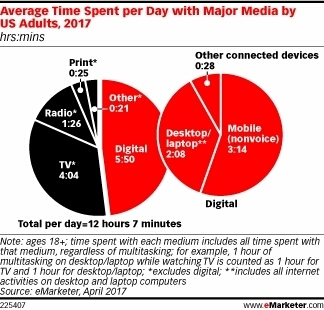

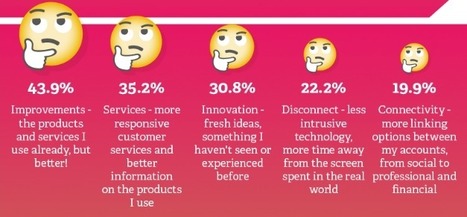

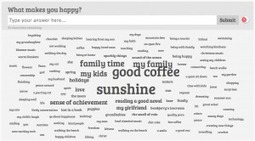





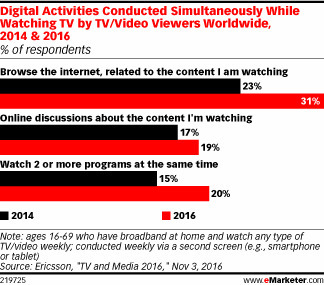

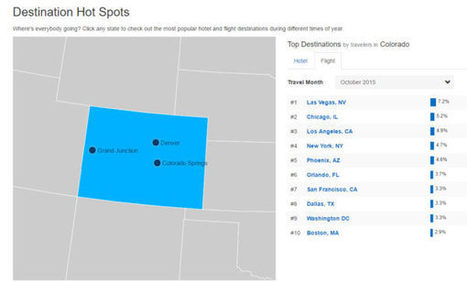
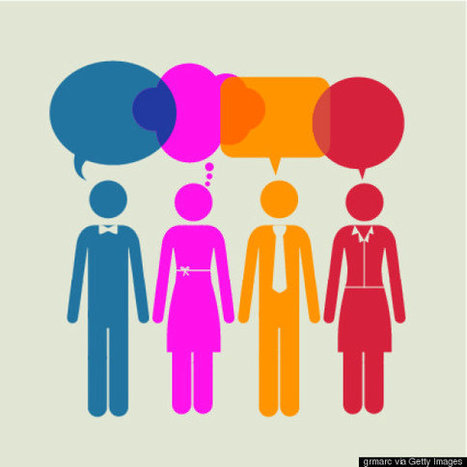


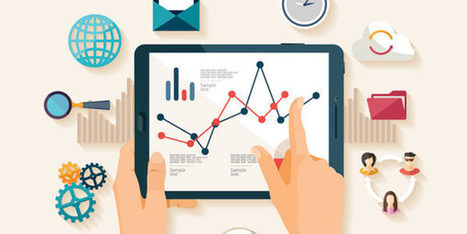

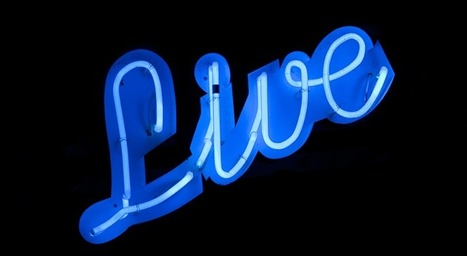
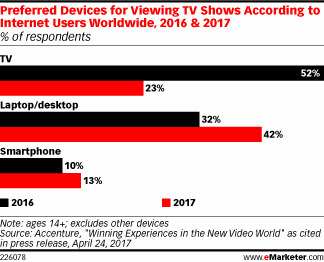
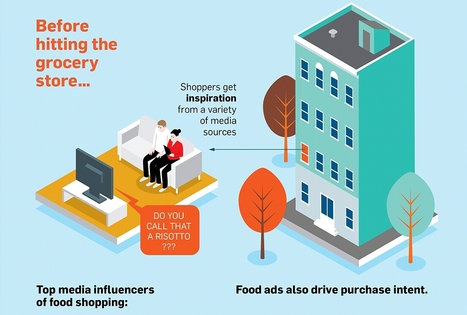
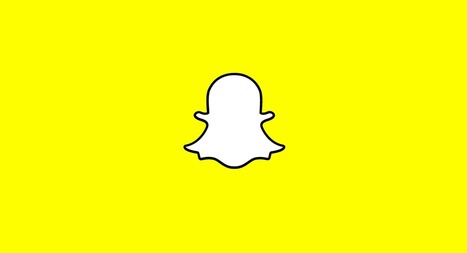
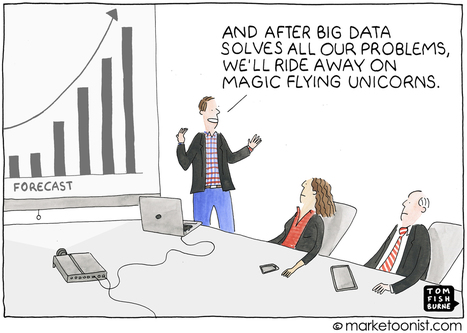
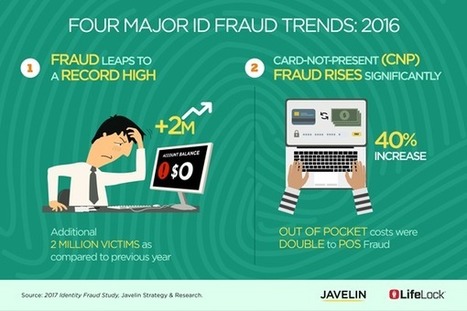
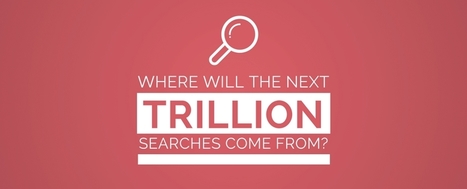

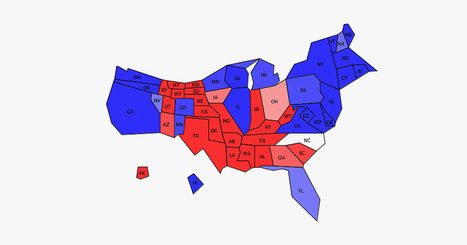

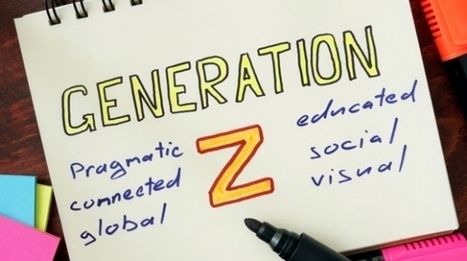






Tom Fishburne looks at the perils of extreme market research confirmation bias. Fun!